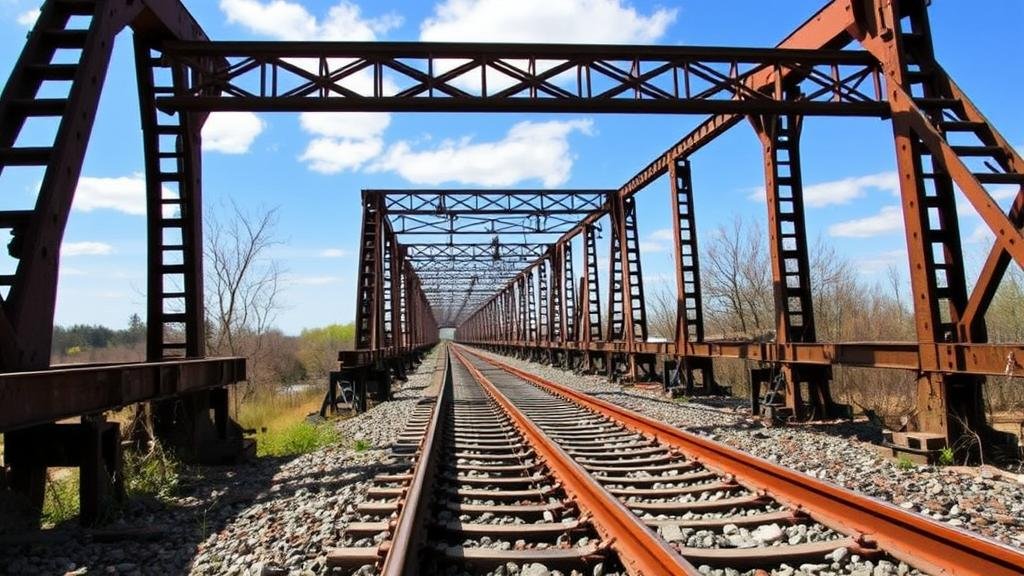Tracing Abandoned Railroad Bridges for Early Engineering Artifacts
Tracing Abandoned Railroad Bridges for Early Engineering Artifacts
The study of abandoned railroad bridges presents an invaluable opportunity to explore the engineering ingenuity and historical significance of transportation infrastructure in the United States. These structures not only serve as remnants of a bygone era but also offer insights into the technological advances and societal shifts of their time. This article aims to trace the historical and engineering significance of abandoned railroad bridges, examining their design, materials, and impact on local communities.
Historical Context of Railroad Development
Railroad expansion in the United States began in earnest during the early 19th century, with the first successful steam locomotive introduced in 1825. By the 1850s, the railroad network had expanded significantly, connecting major cities and facilitating the movement of goods and people across vast distances. The construction of bridges became a critical component in overcoming geographical obstacles, allowing railroads to traverse rivers, valleys, and rugged terrain.
- The first iron bridge in the United States, the Wheeling Suspension Bridge in West Virginia, was completed in 1849.
- By the end of the 19th century, thousands of railroad bridges were constructed to accommodate burgeoning rail traffic.
Engineering Techniques and Materials
The design and construction of railroad bridges involved various engineering techniques influenced by the materials available during different periods. Early wooden trestle bridges were common but often susceptible to weathering. As technology advanced, iron and steel became the preferred materials due to their superior strength and durability.
Iron and Steel Bridges
With the introduction of new construction techniques, such as the use of the cantilever design and truss systems, engineers were able to build longer and stronger spans. For example, the Forth Rail Bridge in Scotland, completed in 1890, showcased the possibility of using wrought iron for large-scale bridge constructions. In contrast, the U.S. experienced similar advancements through the use of steel, notably within the American Bridge Company, which constructed numerous bridges across the country from the late 19th to early 20th centuries.
Documenting Abandoned Bridges
The abandonment of railroad lines and their accompanying bridges stems from multiple factors, including the rise of automobile travel, economic decline in the region, and a shift in transportation logistics. As freight and passenger trains became less viable, many bridges fell into disuse. This abandonment renders these structures ephemeral witnesses to history; thus, it is crucial to document them both for their engineering significance and their role in local history.
Methodological Approaches
Researchers employing varied methodologies can trace and document these structures. Field surveys, historical research, and technological tools such as Geographic Information Systems (GIS) and drone photography are effective in cataloging the current state of these artifacts. For example, a recent study conducted along the Midwest’s abandoned rail lines utilized GIS to integrate historical maps with current geographical data, successfully identifying at least 200 previously undocumented bridges.
Case Studies: Impact on Communities
The impact of abandoned railroad bridges extends beyond engineering; they often significantly affect local communities. For example, the Ludlow Bridge in Massachusetts, abandoned in 1970, has become a focal point for local historical societies aiming to preserve its legacy. Also, the bridge has been repurposed as a pedestrian walkway, showcasing how these structures can be revitalized for community use.
Preservation Efforts
Efforts to preserve abandoned railroad bridges are gaining traction. Organizations like the National Trust for Historic Preservation and local historical societies actively campaign for the recognition and conservation of these structures. The Rails-to-Trails Conservancy is a notable example, converting abandoned rail corridors–bridges included–into multi-use trails, promoting both historical appreciation and modern utility.
Conclusion and Future Directions
Tracing abandoned railroad bridges for early engineering artifacts serves not only to preserve historical memory but also to increase awareness of the evolution of transportation infrastructure. By documenting these structures, researchers can provide invaluable data for future engineering projects and promote community engagement. As urbanization continues to encroach upon historical sites, proactive approaches in preservation and valuation of these artifacts become increasingly critical.
In future research, interdisciplinary collaborations between historians, engineers, and community planners can further enhance the understanding of these significant structures. Such initiatives will foster a deeper appreciation of our engineering heritage and inform the sustainable development of our transportation systems.


